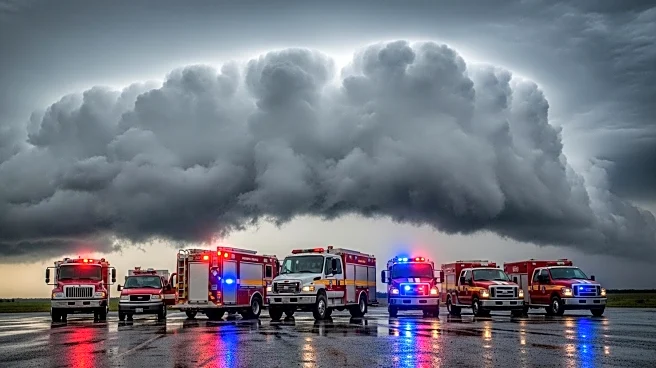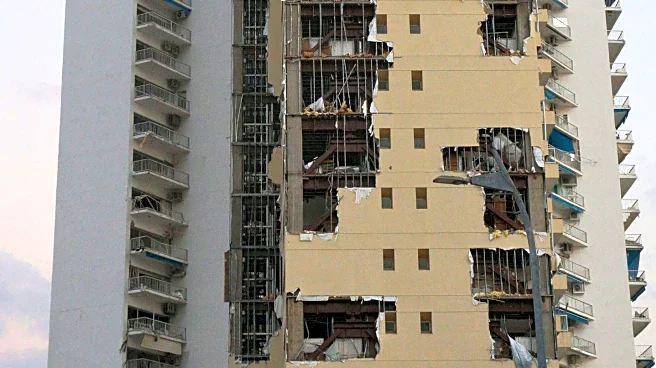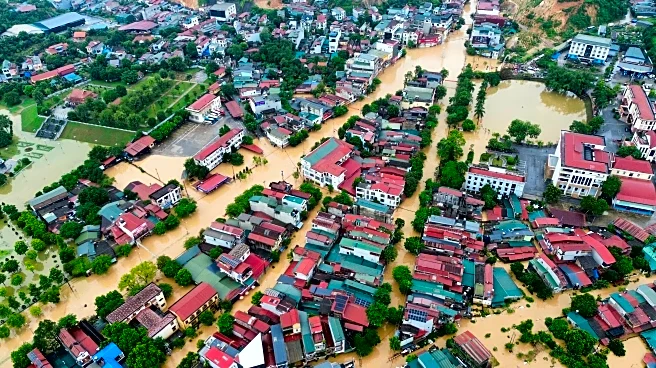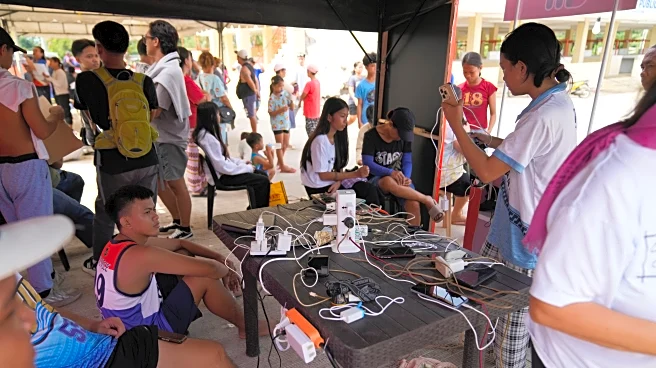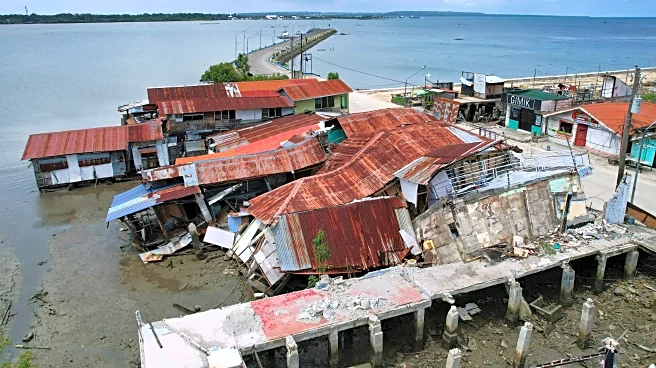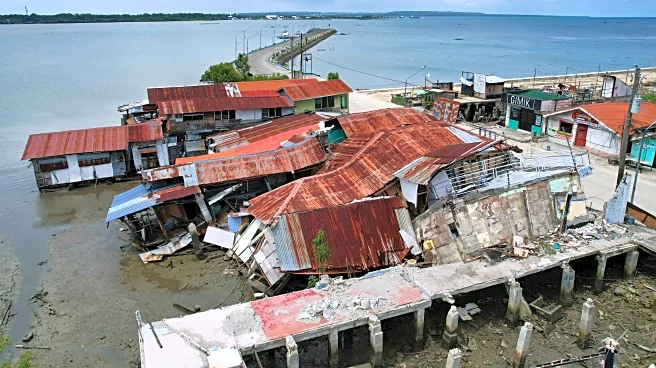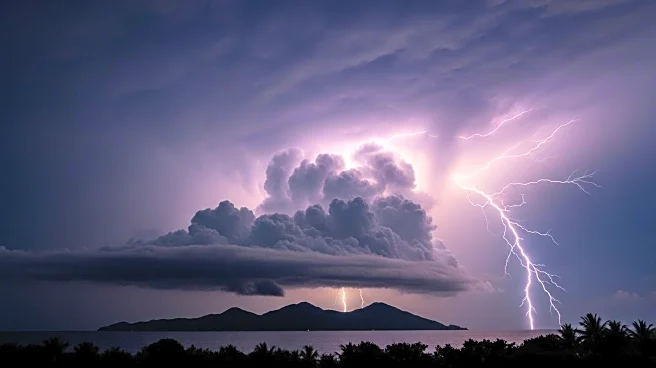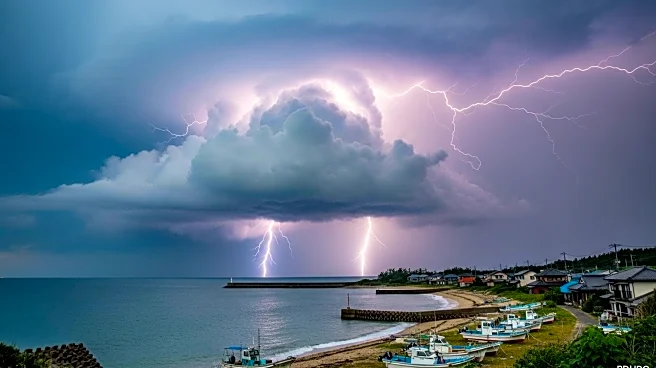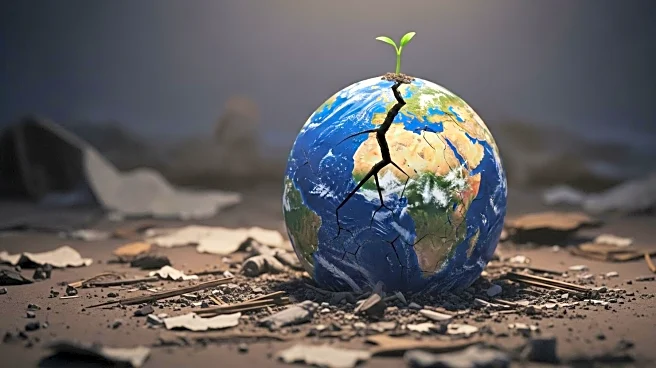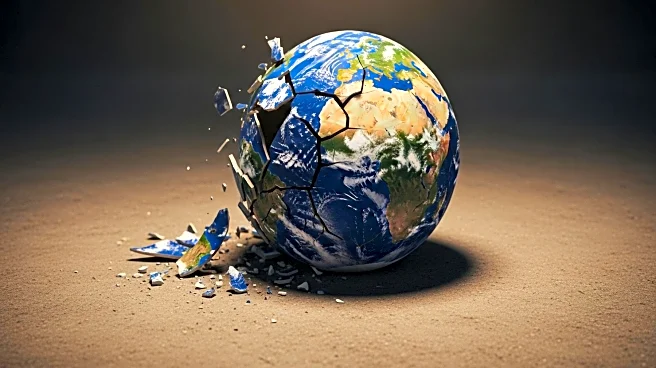What is the story about?
What's Happening?
Typhoon Matmo has made landfall in the northern Philippines, specifically in Dinapigue town, Isabela province, bringing sustained winds of up to 130 kph (81 mph). The typhoon is complicating disaster response efforts following a recent deadly earthquake in the central province and two other storms. Schools have suspended classes, and cargo and fishing vessels are prohibited from entering the rough seas along the typhoon's path. The typhoon is expected to move into the South China Sea and head towards southern China. The Philippines, prone to natural disasters, faces about 20 typhoons annually and is situated on the seismically active Pacific 'Ring of Fire.'
Why It's Important?
The arrival of Typhoon Matmo adds to the challenges faced by the Philippines, which is already dealing with the aftermath of a 6.9-magnitude earthquake that killed at least 72 people and injured over 550, primarily in Cebu province. The earthquake damaged more than 5,000 homes, leaving many residents fearful of returning due to aftershocks. Additionally, the country recently experienced Typhoon Bualoi, which resulted in 37 deaths and displaced thousands. The compounded impact of these natural disasters strains the country's disaster response capabilities and highlights the vulnerability of the Philippines to such events, affecting its economy and public safety.
What's Next?
As Typhoon Matmo progresses towards the South China Sea, it is expected to pass by Hong Kong and head towards Hainan Island and Guangdong province in China. The Philippines will continue to manage the immediate impacts of the typhoon while addressing the ongoing recovery efforts from the earthquake and previous storms. Authorities may need to enhance evacuation plans and disaster preparedness measures to mitigate future risks. International aid and support may be sought to assist in recovery and rebuilding efforts, especially in the most affected areas.
Beyond the Headlines
The frequent occurrence of natural disasters in the Philippines underscores the need for improved infrastructure and disaster management systems. Long-term strategies may include investing in resilient building practices and enhancing early warning systems to better prepare for future events. The cultural and social resilience of the Filipino people is often tested in such times, highlighting the importance of community support and solidarity in recovery efforts.
AI Generated Content
Do you find this article useful?
